Heart Rate Variability and the Scientific Path to Greater Productivity
Heart rate variability is a measure of the difference in time between heartbeats.
Simple as it is, heart rate variability or HRV for short, contains a lot of messages about how your body is performing.
Physicians and athletes have understood the importance and principles of heart rate variability, but the implications of HRV have seldom been traced to some of the most important aspects of life — our daily work.
This article explains what heart rate variability is, what it means specifically, and how to use this data to perform better in your daily work, even if you’re not an endurance athlete or a physician.
KosmoTime, the app referenced in the productivity tips below, is committed to using science to show the path to improved productivity. By understanding these principles and applying them, you are guaranteed to work smarter and to achieve far more than you thought possible.
Table of Contents
What is Heart Rate Variability?
Heart rate variability measures the difference in time between heartbeats.
The time between heartbeats is known as the interbeat intervals or RR intervals.

The differences are often minuscule — just a few milliseconds. Just a brief HRV reading, however — a minute or less — can indicate what’s up with your autonomic nervous system and how your body is functioning overall.
You can control a lot of things about your body — moving your leg or blinking your eyelid. But you can’t control your heartbeat in the same way.
Your heartbeat is one of the body’s functions that is beyond your direct control — a part of the autonomic nervous system.
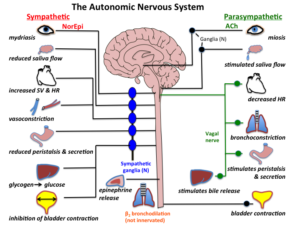
The autonomic nervous system runs our body’s operating system, so to speak. Without our conscious effort, the ANS allows our body to digest food, secrete saliva, and circulate blood.
There are two portions of the autonomic nervous system — sympathetic and parasympathetic. The interplay of these two systems controls what is commonly known as the body’s fight-or-flight response.
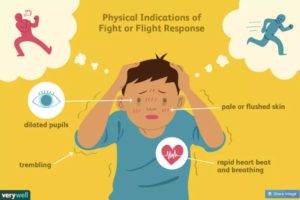
If your body is in a stressful situation — either mental or physical — the body’s autonomic nervous system revs up.
Hormones like adrenaline and noradrenaline rush into the bloodstream to cope with the stress. Your blood pressure rises. Your breathing rate increases. Your skin becomes pale. The pupils dilate. You may experience tensed or trembling muscles, and your body may begin perspiring.
These responses can be helpful in many cases. Often, however, due to environmental situations or chemical imbalances that aren’t our fault, the body’s autonomic response mechanisms are constantly in such a state of high-alert.
Being in a regular state of fight-or-flight messes with the body’s need for equilibrium, and places our health, productivity, and overall wellness in a precarious place.
But how do you know if you’re fired up, maxed out, or in a state of autonomic nervous system high alert?
That’s what HRV readings can tell us.
What Does Heart Rate Variability Tell Us?
HRV serves as a helpful indicator of our internal functioning. We can’t fake HRV readings. They give us straightforward intel on what our body is up to.
Just like you’d take your temperature to determine if you have a fever, so you can check your heart rate variability to determine how activated your sympathetic nervous system might be.
HRV can measure the functioning of the autonomic nervous system, as mentioned above.
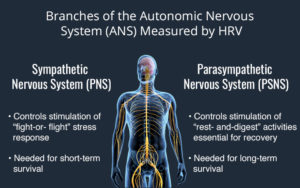
Your sympathetic and parasympathetic nervous systems are always in a state of push and pull, regulating your body’s core functionality to ensure that you are healthy.
Every heartbeat provides an indication of this push and pull. That’s why there is variation between the timing of each heartbeat.
The variability is a good sign, indicating that your body’s push-and-pull mechanism is functioning as it should.
Higher heart rate variability scores are a good sign.
When the body is in a resting state and heart rate variability is high, it’s a good thing.
This high variability tells you that the push-and-pull between the sympathetic and parasympathetic nervous system is working as it should.
These are some of the practical ramifications of a high heart-rate variability score:
- Greater willpower
- Positive mood
- High resilience
- Overall wellness and healthfulness
- High productivity
An HRV in a healthy range like this is an indication that you’re ready to take on challenges, get a lot done, and conquer tasks with high cognitive load.
Lower heart rate variability scores are a warning sign.
If your heart rate has low variability, it indicates that your body is in an agitated state. Your heart rate variability has low variation, meaning it is focused on something.
Typically, low HRV means an increased fight-or-flight response in the sympathetic nervous system, and a suppression of the parasympathetic nervous system.
These are some of the things your body may experience with low HRV:
- Diminished willpower
- Negative mood
- Low resilience
- Overall poor health
- Low productivity
How Do You Track Heart Rate Variability?
Heart rate variability sounds great so far — a predictor of one’s mood, productivity, health, etc.,
But how do you get this data?
It’s easier than you might think. No labs, white coats, or poking needles needed.
If you have a smartphone, open your phone’s app store and search for “HRV.”
I use an iPhone, and I get hundreds of results in the App Store for apps that measure HRV.
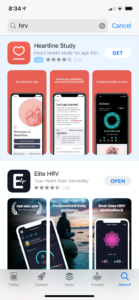
Some apps, like the one I use regularly, Welltory, only require your phone’s camera to measure HRV.
It’s important to note that using your iPhone’s camera isn’t the same as using a medical-grade heart rate variability monitor. But for inexpensive and on-the-go readings, it’s a helpful stand-in.
Some apps, such as EliteHRV, require an external heart rate variability monitor.
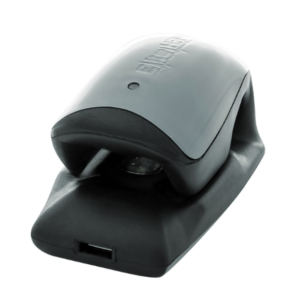
Some apps connect with smartwatches such as the Apple Watch, which also provides HRV data.
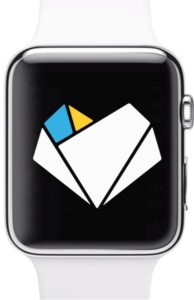
Another method of measuring HRV is a heart rate monitor chest strap.

Although primarily designed to measure heart rate, some devices can accurately measure HRV as well.
To sum up, here are some of the devices and methods for measuring heart rate variability:
- Smartphone camera
- Smartwatch
- Chest strap
- Heart rate variability monitor
My suggestion?
To start out with, use what you have on hand.
Most professionals that I know have a smartphone. Install an app and get a measurement. It’s that easy.
This morning, I used Welltory to get my HRV reading. It took just a couple of minutes.
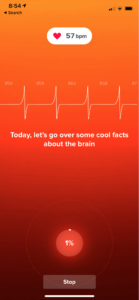
After the reading, the app gave me a customized report.
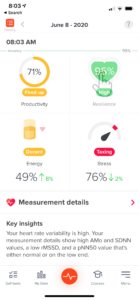
I don’t have to personally unravel the intricate mysteries of AMo, SDNN, rMSSD, and pNN50.
All I have to do is to glance at the numbers and, voila!, I understand what’s up.
Although my stress levels appear a bit elevated — I had to diffuse an altercation between my children — my day appears to be going well and I can feel confident taking on some demanding tasks (like writing this article).
How to Use Heart Rate Variability for Greater Productivity?
Harvard Health Publishing, a periodical of the Harvard Medical School, calls heart rate variability “ a new way to track well-being.”
Well being is very broad, but it is foundational to high levels of productivity.
The healthier you are, the more productive you’ll be.
But HRV provides insights into more than just overall wellness. Thanks to data being broken down, we can understand our energy, stress, productivity, and resilience levels at a glance.
Here’s how I use this data to manage and improve my productivity:
- I take an HRV reading in the morning before I start my workday.
- If my productivity levels are high, I arrange my to do list to tackle difficult or demanding tasks first.
- If my productivity levels are low, I select non-demanding tasks to accomplish.
- If I have high resilience levels, I feel confident packing my day with a strong number of tasks.
- If my resilience readings are low, I shave my to do list lower than normal.
- If I have a strong energy reading, I feel empowered to keep a strong to do list with demanding tasks.
- A low energy reading suggests that I engage in an energy-boosting activity. For me, this is often a short walk around my residential neighborhood.
- If my stress levels are high, I take a few minutes (usually three) to meditate or do breathing exercises.
In addition to analyzing daily data, I also give attention to data trends over time.
For example, if I see a pattern of low energy, resilience, and productivity, I recognize that I may need a reset.
I’ve discovered that taking a few hours in nature is a surefire way to get my body back to equilibrium.
Sometimes, it calls for something even more — a short vacation, the afternoon off, a sauna session, or a massage.
The important thing is to stay tuned into what your body is telling you and take action.
HRV + KosmoTime
HRV data only works if you put it into practice using a powerful to-do list like KosmoTime.
After taking my HRV reading, I look at my to-do list.
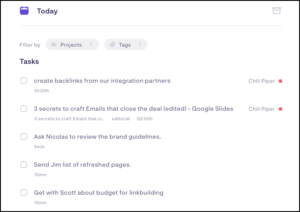
At a glance, I can tell which of these tasks are demanding, because of the time that they take. One of them, for example, takes two hours!
Based on what I know about my body and wellness, I know that today’s productivity and achievement levels are high.
I’m confident that today, I can achieve at least two of those demanding tasks.
The other tasks — “Ask Nicolas,” “Send Jim,” “Get with Scott,” — are quick and easy. I can batch those since they all involve culling some information from Google Drive and sending it in Slack.
(Jim, Nicolas, and Scott are real people, by the way, and these are actual tasks for my actual work. No need to bluff here.)
Last week, however, I felt pretty drained on Friday and my HRV scores reflected it. I had eight meetings that day, a lot for someone who skews introverted.
For that reason, I selected a task that was fairly easy — mowing through my inbox (250?!).
KosmoTime integrates with my inbox to start the task. This places me into focus mode — times the task, places me into do not disturb on Slack, and shuts down all my browser tabs.

I spent a very productive hour and fifteen minutes on my email, thanks to the knowledge of my HRV scores and the power of a science-backed to-do list.
HRV, Wellness, and a Productive Life
When you listen to your body using science-backed methods like heart rate variability, you gain valuable insight into how to become a more balanced, aware, and healthy human.
Productivity is just one marker of wellness. And, since many professionals spend much of our time pursuing productivity, it’s important that we give it the attention it deserves.